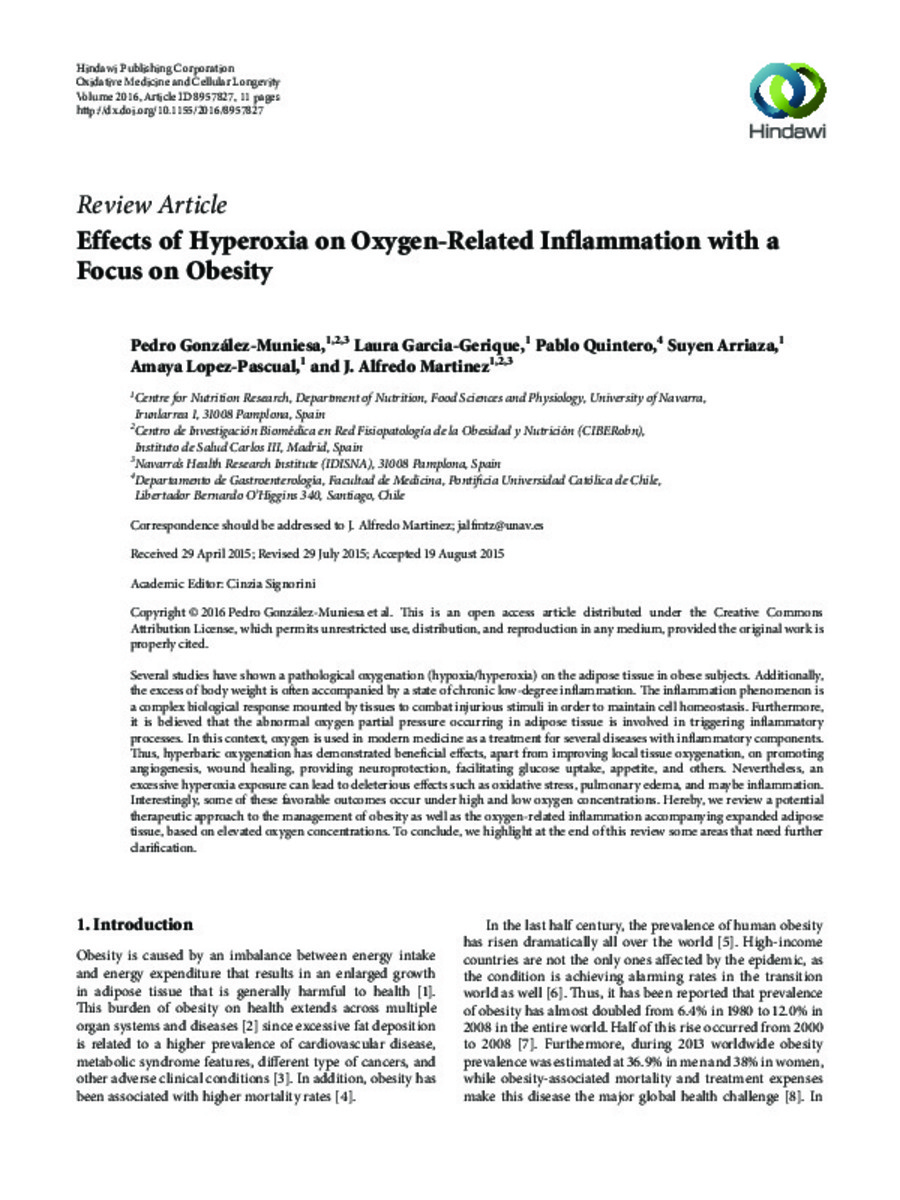Effects of hyperoxia on oxygen-related inflammation with a focus on obesity
Palabras clave :
Materias Investigacion::Ciencias de la Salud::Nutrición y dietética
Obesity
Oxygen-related inflammation
Hyperoxia
Fecha de publicación :
2016
Editorial :
Hidawi Publishing Corporation
ISSN :
1942-0900
1942-0994
Nota:
Copyright © 2016 Pedro González-Muniesa et al. This is an open access article distributed under the Creative Commons Attribution License, which permits unrestricted use, distribution, and reproduction in any medium, provided the original work is properly cited.
Cita:
González-Muniesa P, García-Gerique L, Quinteros P, Arraiza S, López Pascual A, Martínez JA. Effects of hyperoxia on oxygen-related inflammation with a focus on obesity. Oxid Med Cell Longev 2016;2572606.
Aparece en las colecciones:
Estadísticas e impacto
0 citas en

0 citas en

Los ítems de Dadun están protegidos por copyright, con todos los derechos reservados, a menos que se indique lo contrario.







